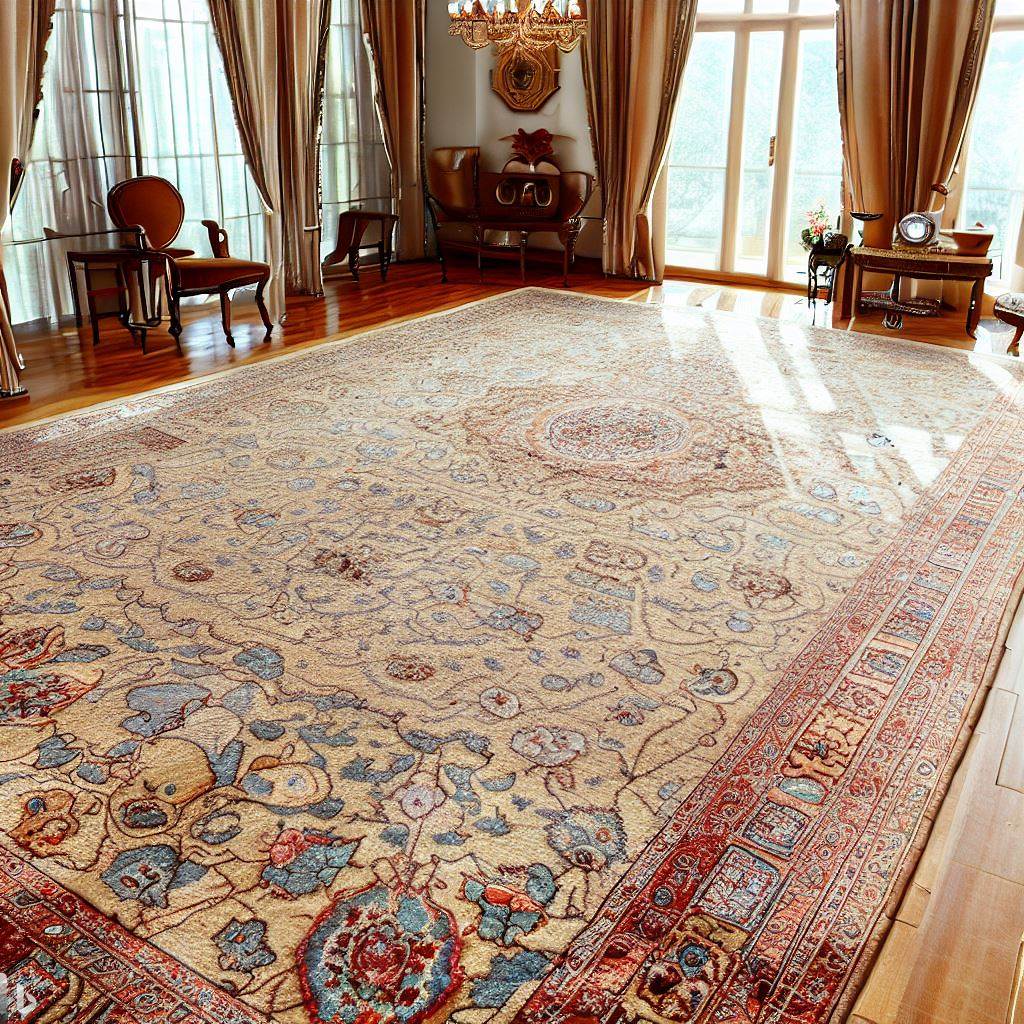Rug Making Therapy: Finding Relaxation in the Art of Weaving
More than just producing beautiful floor coverings, the rhythmic process of rug making offers a soothing oasis that calms the mind, reduces stress, and promotes inner tranquility. The repetitive motions of techniques like braiding, hooking, and hand knotting induce a meditative state that allows thoughts to unwind. Beyond making rugs, this craft becomes a therapeutic outlet for relaxation and creative growth. Rug weaving provides an immersive antidote to life’s pressures. This article explores how rug making’s physical motions and creative flow induce healing, mindfulness, and emotional wellbeing.
Soothing Properties of Rug Making
The inherent tactile qualities that define rug making techniques directly contribute to its calming nature:
Repetitive Motion
The repetitive hand motions of braiding, stitching, or knotting strips of fabric or yarn establish a hypnotic rhythm that settles racing thoughts.
Focused Attention
Intense focus zones awareness on the present as hands mindfully perform rug making tasks like woven stitches or hooked loops.
Texture Touch
Feeling the soothing tactile texture of fibers and fabric through fingertips awakens sensory awareness in each rug making motion.
Measured Movement
Following set sequences slows the pace of activity, encouraging deep breathing and a tranquil demeanor. Tension dissipates.
Creative Flow
The process enters a state of flow as rug making actions become natural, automatic motions guided by creative intuition rather than internal chatter.
Benefits of Rug Making as Therapy
Regular rug crafting sessions cultivate these wellbeing perks:
Stress Relief
The immersive nature draws attention away from stressful thoughts. Repetitive motions produce a calm hypnotic effect that unwinds tension.
Mindfulness
Tuning into the present moment heightens awareness and appreciation of each purposeful action. Active meditation through rug making.
Emotional Balance
The rhythmic ritual restores emotional equilibrium. Negative feelings dissipate as the process elicits tranquility and inner quiet.
Improved Focus
Hours spent in contemplative rug creation help strengthen attention, concentration, and focus. Great mental exercise.
Confidence Boost
Achieving milestones and learning new rug skills builds a sense of purpose and self-esteem. Creating intensifies self-knowledge.
Social Connection
Sharing the experience in classes or groups forges community through common interest in rug making as therapy.
Best Rug Techniques for Therapeutic Benefits
Some traditional rug making crafts are especially meditative:
Weaving
The repetitive over and under motions of passing weft threads through warp threads promotes flow. Watching the rug emerge is fulfilling.
Braiding
Steadily braiding long ropes of fabric or yarn together loop over loop cultivates patience. Simple motions instill calm.
Hand Stitching
Precisely hand sewing small even stitches to assemble a rug allows thoughts to untangle with each poke of the needle.
Hooking
Methodically pulling fabric strips through burlap backing to form rows of loops feels soothing. Rhythmic motions pacify.
Finger Knitting
Continuously winding and knotting strands of yarn into long braided cords has a centering effect. Portable knitting can be done anywhere.
Tufting
Pushing tufting needles up and down through a backing for hours induces a calming, focused trance. Watching the rug take shape is rewarding.
Designing Meditative Rugs
Certain design elements and aesthetic choices complement rug making’s therapeutic nature:
Repetition and Rhythm
Patterns with repeating motifs, shapes, or steps elicit flow. Geometrics, waves, blooms, gradients create cohesion.
Symmetry
Balanced layouts feel harmonious. Central anchor motifs with frames provide stability and order. Radiating designs calm.
Neutral Tones
Earthy, subdued palettes in shades of white, tan, grey, and pale pastels evoke tranquility. Soft hues soothe.
Natural Shapes
Flowing organic shapes like flowers, vines, leaves, feathers, or seashells bring serene natural inspiration through symbolic meaning or biomimicry.
Textural Contrast
Incorporating varied tactile elements like smooth and nubby yarns or glossy and matte textures engages touch sensations.
Simplicity
Plain backgrounds allow elaborate motifs to shine. Too many competing patterns feel visually busy and chaotic. Seek aesthetic clarity.
Rug Hooking for Emotional Healing
The traditional craft of rug hooking provides ideal therapy. Here’s why:
Repetitive Looping
The consistent motion of pulling fabric strips through burlap backing forms a rhythmic mantra that settles the mind.
Personalization
Patterns and color motifs can reflect emotions, values, or narratives for cathartic expression. Rug storytelling.
Textile Touch
Interacting with varied fabrics and textures through touch strengthens connection between hands and heart.
Creative Outlet
Designing and hooking custom rugs supplies a positive channel for focusing mental energy. Productive distraction.
Flow Zone
Over time loop movements become automatic, allowing the mind to enter a thought-free state of flow aligned solely on hooking.
Finished Product
At the end of the rug making journey is a tangible creation reflecting hours of meditative labor and emotional investment. Accomplishment manifest.
Integrating Rug Making into Wellbeing Routines
To fully experience rug making’s therapeutic rewards takes commitment. Follow these tips:
Schedule It
Book regular rug making sessions in your calendar to establish a consistent routine, as with yoga or meditation. Respect rug time priorities.
Set Goals
Set manageable incremental creation goals to maintain progress and momentum when motivation lags. Mark milestones.
Eliminate Distractions
During rug making time, turn off devices, screens, and other potential disruptions. Protect the therapeutic sanctuary.
Adjust Your Space
Organize your rug making area for optimal comfort. Fine tune tools, lighting, music, seating to maximize serenity.
Find Community
Joining a class or rug hooking circle provides solidarity and support. Share advice and inspiration with like-minded makers.
Be Patient
Allow the emotional benefits to accumulate over time. Don’t judge each session. The process matters more than the product.
Rug Making for Holistic Wellbeing
In our fast-paced, high-stress world, rug making therapy provides a healing haven – a cocoon where hands work in harmony with heart and head. More than just craft, rug creation facilitates spiritual, mental, emotional, and physical balance when practiced with intention. Make rug making a contemplative ritual for realizing inner calm, creativity, and emotional wellness.
